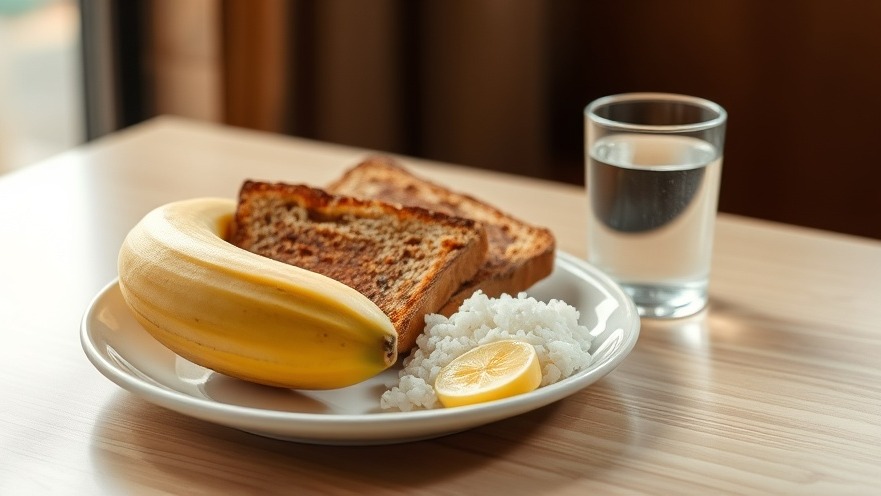
Understanding Chronic Diarrhea: More than Just an Upset Stomach
Chronic diarrhea is not merely an inconvenience; it can signal underlying digestive disorders that require attention. For patients experiencing frequent loose or watery stools, a medical consultation is essential. A thorough diagnosis can help tailor a treatment plan that may involve medication and dietary adjustments.
The BRAT Diet: A Temporary Relief
The BRAT diet—Banana, Rice, Applesauce, and Toast—has long been recommended for managing diarrhea symptoms. While it can help in slowing the digestive process, it's worth noting that it lacks necessary nutrients for long-term use. Therefore, it's advisable for individuals dealing with chronic diarrhea to use it only as a short-term solution.
Foods to Avoid: Navigating Your Diet Wisely
Keeping a food diary is a practical approach to recognizing triggers for diarrhea. Many individuals find that certain food categories worsen their symptoms, including:
Dairy products
High-fiber legumes and cruciferous vegetables
Fruits with high fructose content
Caffeinated drinks
Alcohol
Fatty meats and Fried foods
These items can be particularly problematic, leading to increased bowel movements and discomfort.
Hydration and Electrolyte Balance: The Key to Recovery
Chronic diarrhea can lead to dehydration, making fluid intake crucial. Instead of sipping fluids during meals—which can exacerbate symptoms—focus on hydration between meals. Broth and sports drinks rich in sodium and potassium can help replenish lost electrolytes, while avoiding beverages containing artificial sweeteners, which could worsen diarrhea.
Empowering Patient Conversations: How You Can Support Your Practice
For concierge medical practice owners, understanding how diet influences chronic diarrhea can enhance patient care. Open discussions about nutrition, alongside personalized treatment plans, can solidify trust and rapport with patients. Encourage them to document food-related triggers and share these insights during consultations. Accessible, empathetic communication will reinforce your esteemed position as a top-tier concierge medical provider.
Looking Ahead: The Future of Digestive Health
As awareness of the role of diet in digestive health continues to grow, it presents an opportunity for practices to expand wellness initiatives. Integrating educational workshops or seminars focused on nutrition can empower patients while demonstrating your commitment to their overall well-being.
 Add Row
Add Row  Add
Add 




Write A Comment